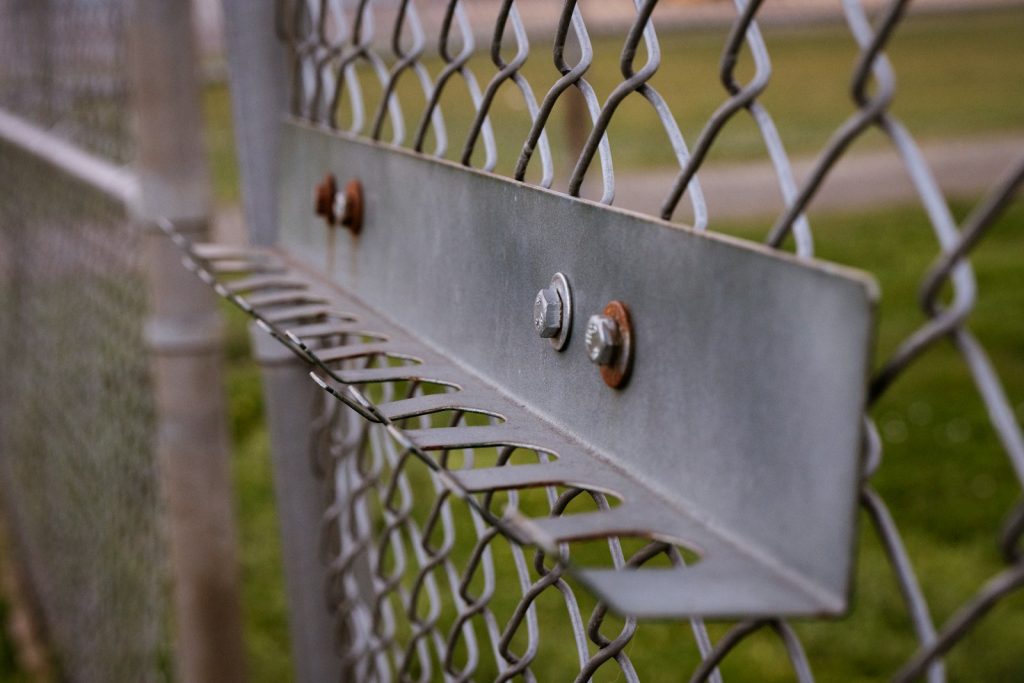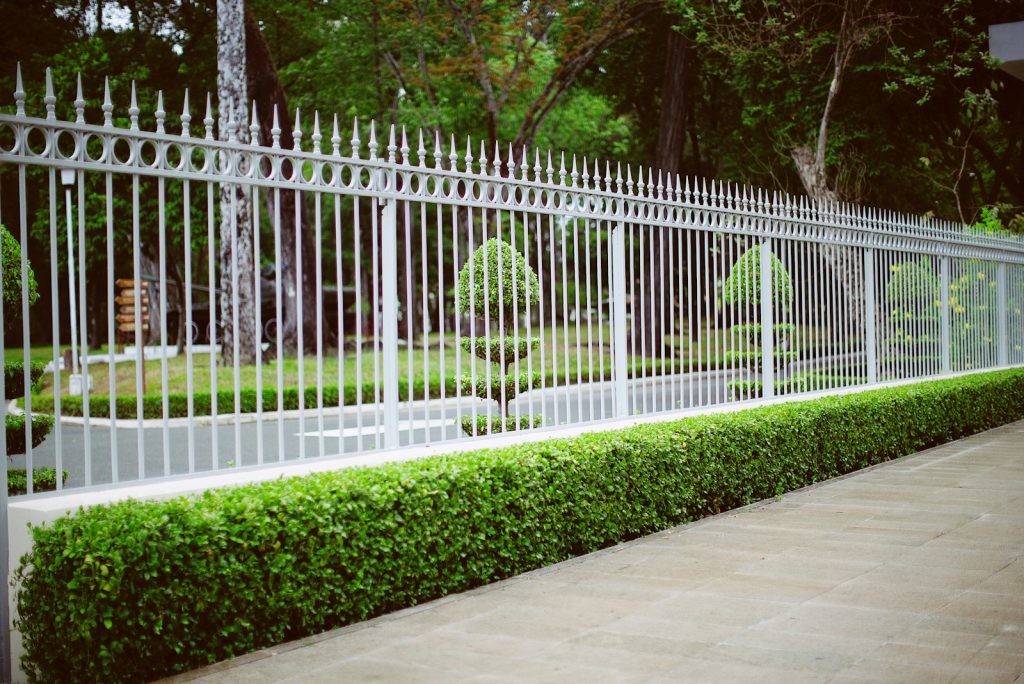Is Fence Repair Cheaper Than Replacement? The Complete Austin Homeowner’s Guide

The decision between fence repair vs replacement challenges many Austin homeowners facing aging or damaged fences. While repairs typically cost 30-60% less upfront, replacement often proves more economical long-term when considering extended lifespan and reduced maintenance. Through our experience completing thousands of Fence Replacement projects across Central Texas, we’ve developed a proven framework to help homeowners make this critical decision. This comprehensive guide examines cost factors, material considerations, hidden expenses, and Austin-specific climate impacts that affect whether to repair or replace your fence. You’ll learn precise cost comparisons for different fence types, signs that indicate replacement is inevitable, and smart strategies to maximize your investment regardless of which path you choose.
The Cost Breakdown: Repair vs Replacement by Fence Type
Understanding typical price ranges for fence repair vs replacement in Austin helps homeowners evaluate their options realistically. These 2024 averages reflect current material and labor costs for common fencing materials:
Wood Fences
Repair Costs:
- Post replacement: $150-$300 per post
- Rail replacement: $75-$150 per 8-foot section
- Picket replacement: $25-$50 per picket
- Full staining: $3-$5 per square foot
Replacement Costs:
- Pressure-treated pine: $18-$28 per linear foot
- Cedar: $25-$38 per linear foot
- Redwood: $35-$50 per linear foot
When Repair Wins:
- Under 30% of components need replacement
- Posts remain structurally sound
- Fence is less than 8 years old
Vinyl Fences
Repair Costs:
- Post replacement: $250-$450 per post
- Panel replacement: $150-$300 per section
- Gate repair: $200-$500
Replacement Costs:
- Standard vinyl: $30-$45 per linear foot
- Premium vinyl: $45-$65 per linear foot
When Repair Wins:
- Damage limited to 1-2 panels
- Color still matches available replacements
- Fence is under 15 years old
Metal Fences
Repair Costs:
- Post straightening: $100-$200 per post
- Section replacement: $200-$400 per section
- Rust treatment: $3-$8 per square foot
Replacement Costs:
- Aluminum: $35-$55 per linear foot
- Wrought iron: $40-$100+ per linear foot
When Repair Wins:
- Damage from single impact event
- Only cosmetic issues (rust, paint)
- Original installation quality was high
Chain Link Fences
Repair Costs:
- Post replacement: $100-$200 per post
- Fabric replacement: $8-$12 per linear foot
- Tension wire repair: $3-$5 per linear foot
Replacement Costs:
- Standard galvanized: $12-$20 per linear foot
- Vinyl-coated: $18-$28 per linear foot
When Repair Wins:
- Only end posts damaged
- Fabric has isolated tears
- Framework remains straight
5 Key Factors That Determine Repair vs Replacement

Beyond simple cost comparisons, these critical factors help determine whether fence repair vs replacement makes more financial sense for your specific situation:
1. Age of Your Current Fence
- 0-5 years: Almost always repair unless catastrophic damage
- 6-12 years: Evaluate based on material and condition
- 13+ years: Usually better to replace, especially for wood
2. Percentage of Damaged Components
- Under 30% damaged: Typically repair
- 30-60% damaged: Case-by-case evaluation needed
- Over 60% damaged: Almost always replace
3. Root Cause of Damage
- Isolated incidents (storm damage, vehicle impact): Often repair
- Systemic issues (rot, rust, UV degradation): Usually replace
4. Material Availability
- Matching discontinued materials may force replacement
- Custom fabrication for repairs can exceed replacement cost
5. Future Plans for Property
- Selling within 3 years? Repair may suffice
- Long-term ownership? Replacement often better investment
The Hidden Costs Most Homeowners Overlook
When evaluating fence repair vs replacement, most Austin homeowners underestimate these hidden expenses:
Repair Hidden Costs
- Recurring repairs: Each fix lasts shorter than the last
- Material mismatch: New wood won’t match aged fencing
- Underlying issues: Fixing symptoms not causes
- Labor minimums: Small jobs often have high minimum charges
Replacement Hidden Costs
- Landscaping damage: Installation affects sprinklers, plants
- Disposal fees: $200-$800 for old fence removal
- HOA approvals: May require architectural reviews
- Temporary barriers: Needed during construction
Climate-Specific Considerations for Austin
Our unique Central Texas weather accelerates certain fence problems:
Clay Soil Impacts
- Shifting soil stresses posts
- Wet/dry cycles cause premature rotting
- Solution: Deeper concrete footings in replacements
UV Exposure
- Fades colors quickly
- Dries out wood fibers
- Solution: UV-resistant materials in replacements
Temperature Swings
- Expands/contracts materials
- Loosens fasteners
- Solution: Thermal gap allowances
High Winds
- Tests structural connections
- Causes fatigue failures
- Solution: Wind-rated designs
Signs Your Fence Needs Replacement (Not Repair)
These indicators suggest replacement likely makes more sense than continued repairs:
- Multiple leaning posts indicating widespread foundation issues
- Rot at ground level on over 25% of wood components
- Rust through metal (not just surface rust)
- Vinyl becoming brittle and cracking easily
- Fabrication discontinued for your fence model
- Repeated repairs to same sections annually
- Visible insect damage in structural members
- HOA violations for outdated fencing
Smart Strategies to Reduce Costs Either Way
Whether you choose fence repair vs replacement, these tips save money:
For Repairs
- Bundle multiple fixes into one service call
- Use compatible alternatives when exact matches aren’t available
- Address root causes (improve drainage, treat insects)
- Learn DIY basics for minor cosmetic fixes
For Replacements
- Time for off-season (winter often has lower demand)
- Choose low-maintenance materials to reduce future costs
- Reuse salvageable hardware like hinges and latches
- Phase the project if budget is tight
For Both
- Get multiple quotes from licensed contractors
- Check for warranties on materials and labor
- Verify insurance coverage before work begins
- Maintain meticulously after service
How to Make the Final Decision: A Step-by-Step Process
Follow this objective framework we use in our Fence Repair consultations:
- Assess Damage
- Create a detailed condition report
- Photograph all problem areas
- Measure affected sections
- Calculate Costs
- Get 3 repair estimates
- Get 3 replacement quotes
- Factor in 10-year maintenance
- Evaluate Longevity
- How long will repairs last?
- What’s replacement’s expected lifespan?
- Consider material advancements
- Check Regulations
- Verify current building codes
- Review HOA requirements
- Confirm property lines
- Consider Lifestyle
- How long will you own the home?
- Any upcoming landscaping plans?
- Need different functionality?
- Make Decision
- Compare total cost of ownership
- Weigh aesthetic preferences
- Choose best value option
Case Studies: Real Austin Examples

These real-world examples from our Fence Repair, Replacement projects illustrate how different situations led to clear choices:
Case 1: Cedar Privacy Fence
- Age: 9 years
- Issue: 40% of bottom rails rotted
- Repair Quote: $2,800 (replace rails, re-stain)
- Replacement Quote: $6,500 (new cedar)
- Decision: Repaired (owner plans to sell in 2 years)
Case 2: Vinyl Pool Fence
- Age: 12 years
- Issue: Discolored, brittle panels
- Repair Quote: $3,200 (partial panel replacement)
- Replacement Quote: $5,800 (full upgrade)
- Decision: Replaced (safety concern with brittle vinyl)
Case 3: Wrought Iron Perimeter
- Age: 20+ years
- Issue: Rusted sections, leaning posts
- Repair Quote: $4,500 (partial rebuild)
- Replacement Quote: $12,000 (new iron)
- Decision: Repaired (historic property, character preservation)
The Bottom Line: Repair vs Replacement
As a general rule of thumb for Austin homeowners:
Choose Repair When:
- Damage is localized
- Original installation was quality
- Materials still match
- You plan to move soon
Choose Replacement When:
- Damage is widespread
- Current fence is near life expectancy
- New materials offer significant improvements
- You’ll own the home long-term
Most quality fencing contractors offer free assessments to help homeowners make this decision objectively. Investing an hour in professional consultation often saves thousands in unnecessary repairs or premature replacements.
The Smart Texas Homeowner’s Guide
When your fence starts showing wear—leaning posts, broken pickets, or rusted metal—you face a tough decision: Should you repair or replace it? While repairs often seem cheaper upfront, replacement can save money long-term.
This guide cuts through the confusion, revealing:
✔ When repair makes sense (and when it’s a waste of money)
✔ Hidden costs most homeowners overlook
✔ Texas-specific factors that impact your decision
✔ How to get the most life from your fence
1. The True Cost of Fence Repair vs. Replacement
A. Average Repair Costs in Texas
| Problem | DIY Cost | Pro Cost |
|---|---|---|
| Replace 1-2 Wood Pickets | $20-$50 | $75-$150 |
| Fix a Leaning Post | $50-$100 | $200-$400 |
| Replace a Vinyl Panel | $150-$300 | $300-$500 |
| Repair Chain Link Fabric | $50-$100 | $150-$300 |
| Gate Adjustment | $0 (labor only) | $100-$250 |
Total Average Repair Bill:
- DIY: $200-$800
- Pro: $500-$2,000
B. Full Fence Replacement Costs
| Material | Cost Per Linear Foot (Installed) |
|---|---|
| Wood (Cedar) | $25-$38 |
| Vinyl | $30-$45 |
| Aluminum | $35-$55 |
| Chain Link | $12-$20 |
Total Replacement Cost (for 100 ft):
- Wood: $2,500-$3,800
- Vinyl: $3,000-$4,500
C. The Break-Even Point
- If repairs exceed 50% of replacement cost, replacement is smarter.
- If your fence is past 75% of its lifespan, repairs are temporary fixes.
Example:
- Repair Estimate: $1,800 (for multiple post fixes + pickets)
- Replacement Cost: $4,000
- Decision: Repair (for now). But if more issues arise soon, replacement wins.
2. When Repair Makes Sense (And When It Doesn’t)

✅ Repair If…
✔ Damage is isolated (1-2 posts, a few pickets)
✔ Fence is under 8 years old (for wood) or under 15 (vinyl/metal)
✔ You plan to sell soon (just make it presentable)
❌ Replace If…
✔ Over 30% of the fence is damaged
✔ Posts are rotting at ground level (indicates systemic failure)
✔ You’ve repaired the same spots multiple times
✔ Materials are discontinued (can’t match colors/styles)
Texas-Specific Red Flags
🚩 Termite damage (common in Central & East Texas)
🚩 UV-brittle vinyl (cracks from sun exposure)
🚩 Rusted metal posts (coastal humidity speeds corrosion)
3. Hidden Costs Most Homeowners Miss
A. The “Repair Spiral” Problem
- Fix one post → another fails next year → soon you’ve spent 80% of replacement cost on piecemeal repairs.
B. DIY Repair Risks
- Improper fixes void warranties.
- Mismatched materials hurt curb appeal.
- Undiagnosed issues (like hidden rot) worsen over time.
C. Replacement Perks
✔ New warranty (10+ years on materials)
✔ Better materials (updated for Texas weather)
✔ Increased home value (buyers prefer newer fences)
4. Material-Specific Repair vs. Replacement Rules
A. Wood Fences
- Repair: If <5 rotted posts, replace just those.
- Replace: If bottom rails are rotting (indicates water damage).
B. Vinyl Fences
- Repair: Single cracked panels can be swapped.
- Replace: If multiple panels yellow/brittle (UV damage).
C. Chain Link
- Repair: Fix fabric tears, tighten loose posts.
- Replace: If posts are rusted at base.
D. Wrought Iron
- Repair: Weld broken sections, repaint.
- Replace: If rust has compromised structural integrity.
5. How to Decide: A Step-by-Step Checklist
- Inspect the Entire Fence
- Check posts, rails, pickets, gates.
- Look for rot, rust, cracks, loose hardware.
- Estimate Repair Costs
- Get 2-3 pro quotes.
- Price DIY materials.
- Ask:
- How old is the fence?
- Are more failures likely soon?
- Will repairs look mismatched?
- Compare to Replacement
- If repairs >50% of replacement cost → replace.
- Consider Long-Term Plans
- Selling soon? Maybe just repair.
- Staying 10+ years? Invest in replacement.
6. Texas Weather’s Impact on Your Decision
A. Central Texas (Austin, San Antonio)
- Sun Damage: Fades/stains faster → repairs may not last.
- Clay Soil: Shifts posts → if multiple lean, replace.
B. Gulf Coast (Houston, Galveston)
- Humidity: Rot & rust accelerate → metal/vinyl lasts longer.
- Storms: Wind damage often requires full replacement.
C. North Texas (Dallas, Fort Worth)
- Hail: Dents vinyl/metal → cosmetic repairs possible.
- Temperature Swings: Wood warps faster.
7. Smart Strategies to Save Money
A. Partial Replacement
- Replace just the worst 20-30% (e.g., sun-blasted side).
B. Hybrid Materials
- Keep good wood pickets but replace rotted posts with metal.
C. Pro Tip:
- If replacing, choose low-maintenance materials (vinyl, aluminum) to avoid future repairs.
Final Verdict: Which Saves More?
| Scenario | Cheaper Option |
|---|---|
| Minor damage (<30%) | Repair |
| Fence is <50% through lifespan | Repair |
| Extensive damage (>50%) | Replace |
| Multiple past repairs | Replace |
When in doubt, get a professional inspection. Many companies offer free estimates to help you decide.
Need a Second Opinion?
👉 Get a Free Fence Assessment
By weighing cost, age, and future needs, you’ll make the smartest choice for your Texas fence!
Final Tip: Whatever you decide, address fence issues promptly. Small problems become expensive quickly in Austin’s climate, and well-maintained fencing enhances property value regardless of age.


